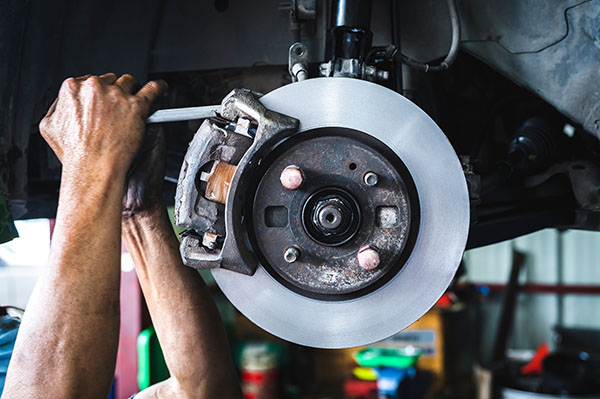
When it comes to vehicle maintenance, choosing the right brake pads is as crucial. Brake pads are integral to your car's braking system, directly affecting its stopping power and safety. But with various types available, picking the right one can be daunting.
SEMI-METALLIC
Semi-metallic brake pads are a popular choice, known for their durability and excellent heat dissipation. Made with a blend of metals like steel, copper, and iron, they provide strong braking performance, especially in larger vehicles or for those who drive in more demanding conditions.
Pros:
- Great for high-performance driving.
- Excellent heat resistance and transfer.
Cons:
- Tend to be noisier than other types.
- More wear and tear on brake rotors.
CERAMIC
Ceramic brake pads, made from dense ceramic material mixed with copper fibers, are the newer players in the market. They are known for quiet operation and less dust production.
Pros:
- Generate less noise and brake dust.
- Stable under a variety of temperature conditions.
Cons:
- Generally more expensive.
- Not ideal for extreme driving conditions.
LOW-METALLIC
Low-metallic brake pads contain a small amount of metal, usually copper or steel, combined with organic materials. They offer better heat transfer and improved braking performance over organic pads.
Pros:
- Better braking performance than organic pads.
- Good heat transfer.
Cons:
- Can be noisier.
- Produce more brake dust.
NON-ASBESTOS ORGANIC
Non-asbestos organic (NAO) brake pads are made from organic materials like glass, rubber, and Kevlar. They are softer and quieter but wear out faster and create more dust.
Pros:
- Quieter braking experience.
- Gentle on brake rotors.
Cons:
- Faster wear rate.
- Less effective in extreme driving conditions.
ORGANIC
Organic brake pads, the original type used in older vehicles, are made from natural materials like glass, rubber, or fiber. While they are being phased out, some older models still use them.
Pros:
- Cost-effective.
- Suitable for everyday driving conditions.
Cons:
- Lower performance compared to newer materials.
- Faster wear rate.
How To Determine What Type Of Brake Pads To Use
Driving Style - Performance vs. Regular Driving
If you're someone who enjoys spirited driving, like frequenting race tracks or driving on winding roads, then semi-metallic or ceramic brake pads are your go-to options. Semi-metallic pads offer excellent heat resistance, which is crucial during high-speed braking, while ceramic pads provide superior braking performance with less noise and brake dust.
Organic or low-metallic pads can be sufficient for regular, everyday driving, such as commuting or leisurely drives. They provide enough stopping power for normal use and are generally quieter and gentler on your car's brake rotors.
Vehicle Type - Considering Your Vehicle's Weight and Usage
Heavier vehicles, like SUVs or trucks, which are often used for towing or carrying heavy loads, benefit from semi-metallic brake pads. They can handle the extra weight and the heat generated from braking in such conditions, much like heavy-duty boots designed for tough terrains.
Smaller, lighter cars can usually get by with ceramic or organic pads, which offer ample stopping power for their size and are less abrasive on the brake rotors.
Budget - Balancing Cost and Performance
For the budget-conscious ones, organic brake pads are a cost-effective choice. They cost less upfront, but it's important to remember that they might wear out faster and need more frequent replacements. Think of them as budget-friendly running shoes that are comfortable but may not last as long as more expensive options.
For those who can allocate more towards maintenance, investing in ceramic pads can be more economical in the long run. They last longer and require less frequent replacements, offering better value over time.
Driving Conditions - City vs. Highway Driving
In city driving conditions, where stop-and-go traffic is common, ceramic brake pads are ideal. They operate quietly and produce less dust, keeping your wheels cleaner. They're like using a silent and efficient home appliance in a busy household.
For highway driving or in rural areas with less traffic, semi-metallic or low-metallic pads can be a good fit. They provide the necessary stopping power for higher speed braking and are more durable for long-distance driving.
Need a brake pad change? A Plus Automotive is here to help out - just give us a call!